5 points that make the building outlook
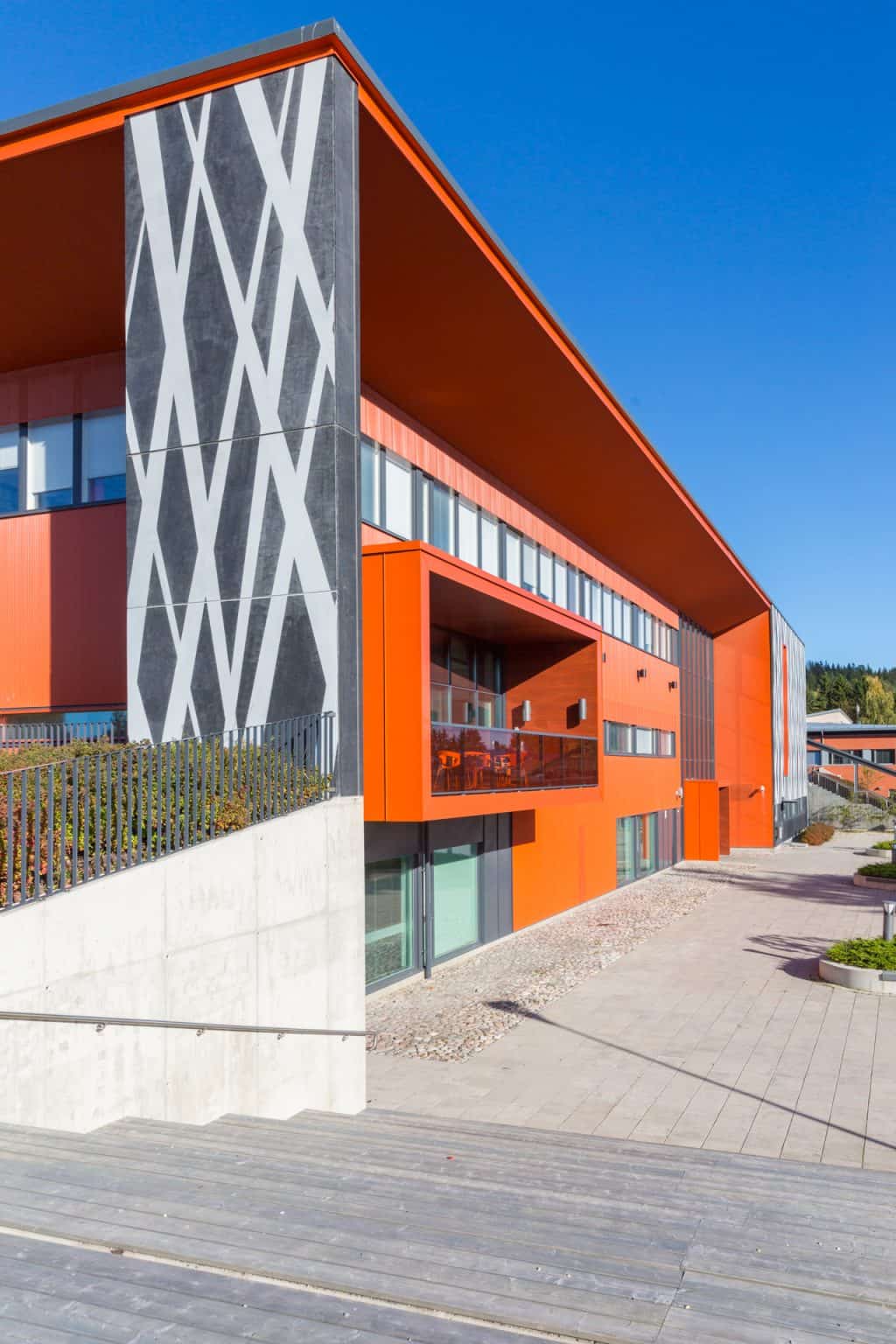
What makes a good looking apartment building? That’s a good question for all the precast concrete manufacturers. Perhaps it would be easier to approach the subject the other way around by asking what a building definitely shouldn’t look like!
In Finland, the precast concrete building method quickly became popular in the 60’s and 70’s, when huge numbers of new residential neighborhoods were built. In these, the top priority was volume and price. Back then, not much thought was given to the appearance of the facades. New suburbs were built, which are nowadays easily recognizable by their grid-like, massive and gray facades. The gray buildings with a box-like appearance and large seams in between the elements are now labelled as “social housing”, a label that is no longer wanted.
These houses have now been renovated with additional thermal insulation and coating, refurbished windows, and enlivened balcony systems with glazing. Thus, they look like high-quality residential areas currently.
Now we can place the first requirement: the design criteria for a new residential building are that the building should not look like a box, be grey or have noticeable seams.
Another requirement is that the building should fit into the environment, be recognizable, and be unique and fresh.
Nowadays, in Scandinavia residential construction is highly concentrated on additional construction, where residential areas are made more compact by dismantling old low-rise buildings and building new higher buildings. Similarly, new houses are built in the old large parking areas when those are replaced with parking houses. In these cases, new buildings should be suitable for the already built environment.
The zoning regulations have often been very strict and dictating in terms of design and the facades of the buildings.
Today, architectural design has become somewhat bolder and even more artistic and creative approach to new buildings is required. Requirements to enliven the environment with art and by bringing out specific regional history have sometimes even been included in the zoning regulations. This is valuable as it creates living comfort and enhances connection with the area.
The cost of the facade is only about 5 – 10% of the whole building, so it is worth investing in as it does not significantly increase the total costs.
The residential building in Keimola, Vantaa, Finland has been built in the place of a former Formula track, which can be seen at the entrance of the building.
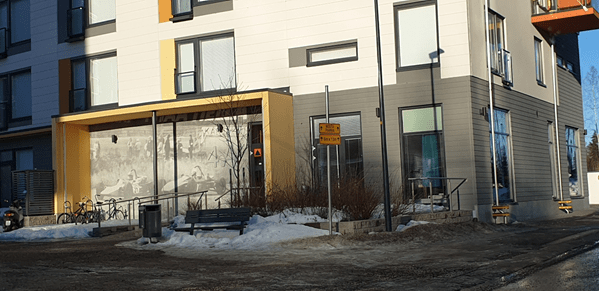
Nowadays, precast manufacturers have a variety of different facade options to offer. Concrete facades are very competitive compared to other options. They feature excellent technical performance, fire safety and long lifetime. In addition, precast sandwich speed up construction projects and are ideal for winter construction. When windows have been installed to the panels already at the factory, the building is weather-proof immediately after installation, thus the interior work can began sooner.
There are many different ways to create a spectacular and representative facade. Balconies are usually required in all well-equipped apartments. In small student apartments, a French balcony is enough, i.e. an inward opening door in the wall. A glass plate can be used as a protective wall, so that the balcony does not differ much from the rest of the facade.
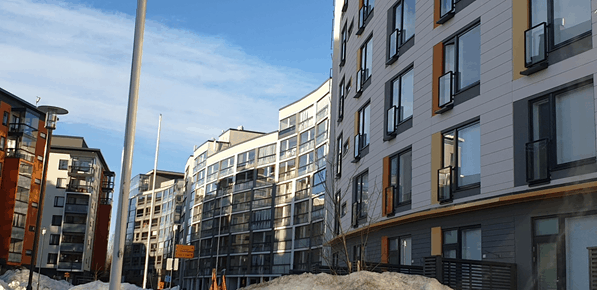
The aim is to design apartments of several sizes within a residential building; in order to avoid strong vertical lines from top to bottom, formed by the structures supporting balconies, some of the apartments may have overhanging balconies. Thus, the appearance of the facade is primarily based on the wall surfaces.
When all the apartments come with balconies, their load-bearing wall structures form a stronger vertical line that increases the building’s massive and tall appearance. In tower blocks this is acceptable, but in long low buildings it creates a heavy look that is not desirable.

Today balconies are often glazed and balcony railings can also be made of glass. By using variety of color shades on the glass surfaces, the concrete structures in the background are completely covered, which decreases the facade’s heaviness. The vertical walls of the balconies may have asymmetrical cover plates to hide the vertical lines, which eliminates the box-like appearance even further. Slim circular concrete pillars can also be used as the supporting structures for the balconies, thereby lightening their appearance. Likewise, the balcony type can also be overhanging to lighten the appearance of the entire facade.
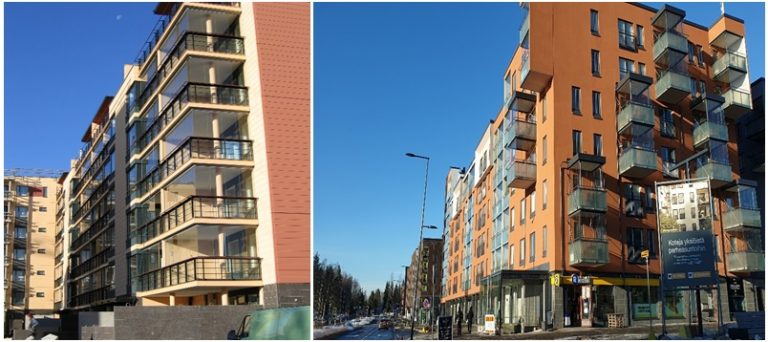
The balconies can also be pulled inwards to the building, so the balcony line disappears into the appearance of the entire building.
Large surfaces without balconies should also be livened up by various architectural means. It is usually worth to make the bottom layer look different, which reduces the large single facade area. In Finland, it is nowadays popular to use graphic concrete on the walls of the lowest layer, at least partially. The pattern can include, for example, pieces of the history of the neighbourhood, or other unique aspects of the apartment or residential area. Impressive concrete surfaces are also better saved from graffiti.
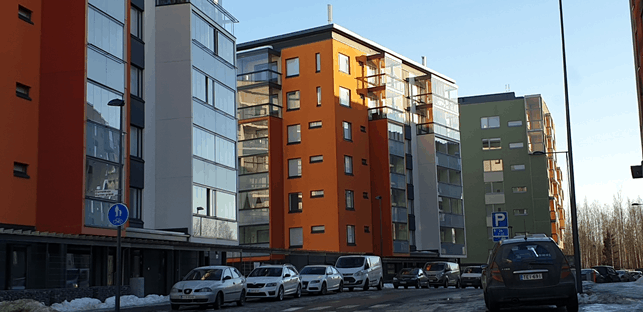
The shape, size, and placement of windows may also vary. The upper part of the house and more pronounced appearance of the roof structures also lighten the massiveness of the unified façade.
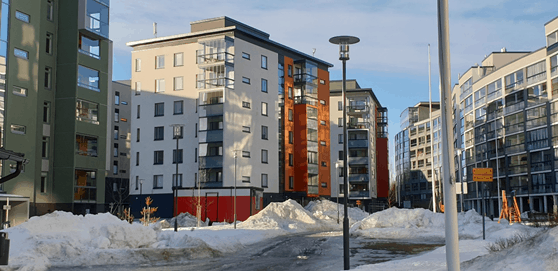
In large concrete surfaces, the visibility of joints should be avoided.
There is a number of means to do so, such as; rethinking the shape and size of the seams, placing seams at discontinuities, e.g. at window seams, grooves and level differences, changing facade surface colors or materials at the place of the seam or using plastered facades.

Factory pre-painted surfaces are a popular and inexpensive alternative in creating a spectacular facade.
The popularity of the plastered façade has grown strongly recently. Plastering enables a wide range of colors and seamless surfaces.
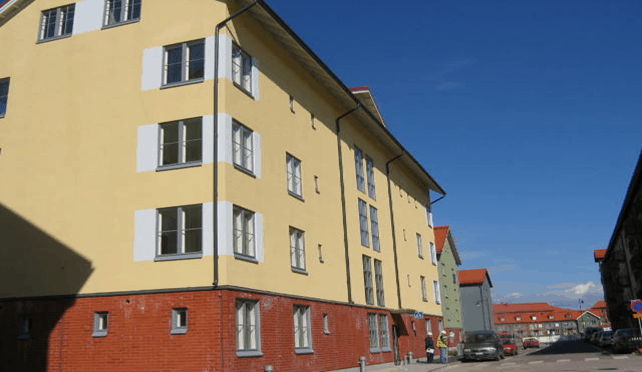
Writer

Heikki Kankkunen
Gonatus Oy